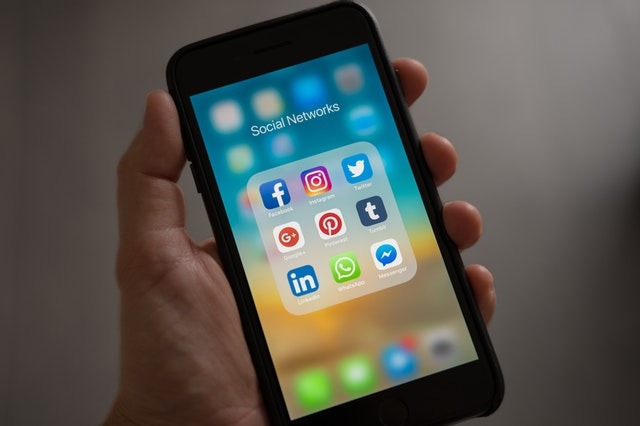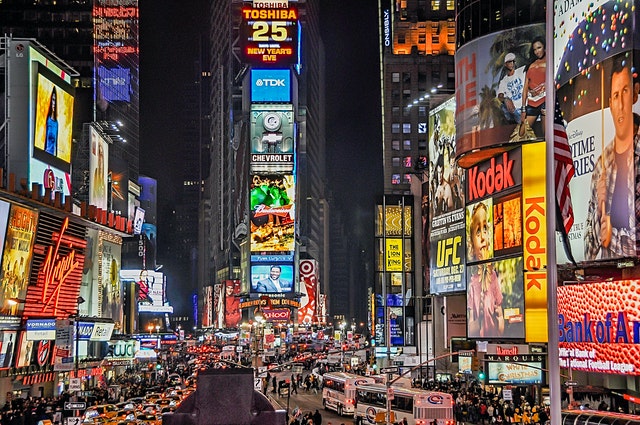
What is paid advertising?
Paid advertising is any kind of advertising that you have to pay for, versus owned or earned advertising.
With paid advertising, marketers pay the owner of ad space in exchange for use of that space. The price paid for the ad space is often settled through a bidding process between marketers and the ad space owner.
There are several categories, including pay-per-click (PPC), pay-per-impression (PPI), and display ads.
Why is paid advertising important in marketing?
Efficient marketing campaigns capitalize on all channels for advertising. Although paid advertising costs more than owned or earned advertising, paid forms are an effective way to expose your company’s name to a large audience.
Paid ads are usually displayed to users on the sides, tops, or bottoms of web pages. Marketers can pay more to have their ads featured on more popular websites to increase traffic.
As the Internet has developed, paid advertising has become detailed and diverse. Navigating the right platforms with useful strategies requires background knowledge on how paid online advertising works.
Bidding Strategies
Paying for online advertising is more complex than typical transactions because customer actions play a role in the price. The two predominant bidding avenues are PPC and CPM.
Cost-Per-Mille or Cost-Per-Thousand
Cost-per-mille (CPM) bidding has a one-time price for the number of impressions you buy. Mille, or “thousand” in Latin, is the number of impressions you get, and impressions happen when the ad shows up on a page. CPM doesn’t guarantee clicks or conversions, but it does position your ad for visibility.
Pay-Per-Click or Cost-Per-Click
PPC bidding only requires payment when people click on your ads, and it’s also referred to as cost-per-click (CPC). The price of each click is based on the demand for your desired keywords and the quality of your ad.
Paying directly for these positive actions gives you a greater likelihood of conversions, and you can place a limit on the number of clicks you want to maintain a budget.
Formats of Paid Ads
Paid ads are split into two formats that determine how viewers see them. You can choose between display and search ads for your unique purposes.
Search Ads
Search or text ads show up on search engine results pages, and most blend into the search results, distinguishing themselves by a small message that reads “ad” or “sponsored.” Because text ads are linked to search queries and keywords, they normally fill a need.

Display Ads
Display ads appear around content on a variety of website pages rather than on search results pages. To fit into ad spaces, they come in several sizes and orientations. As a worthwhile brand awareness tool, display ads offer exposure, and their images and text are customizable.
Popular Ad Networks
To get the most out of ads, they need a substantial presence on widely used websites. The most popular locations for your search and display ads are Google, Bing, and social media platforms.
Google Ads
As the leading search engine, Google is a lucrative place for both display and search ads. The Google Display Network distributes your display ads across their partner websites like Youtube and Google-related apps. Google also includes search ad bidding, but the keyword auctions are generally competitive.
Bing Ads
Although Bing isn’t as sought-after as Google, it still has a following. Your search ads can line organic searches — plus Bing partners with Yahoo and AOL to exhibit ads.

Bing and Yahoo’s reports paint a really wonderful picture of Bing Ads’ growth this past year. Bing grew to 19.7% of the US search market share and Yahoo saw a 10% increase in paid search clicks over the past year. And while there’s no doubt that they’re both still underdogs to Google, they’re making strides in areas Google Ads (formerly known as Google AdWords) has been struggling – Google paid search clicks are actually down 11% from this time last year.

So Bing Ads must be doing something right, and it made me wonder, what is Bing doing that Google isn’t? It may surprise some that Bing Ads has some powerful advantages for advertisers that Google simply doesn’t.
Social Media Ads
Facebook is the primary social media platform for paid ads, as they have a thorough targeting system. Your display ads can turn up in columns, on newsfeeds, and in stories. Instagram is under Facebook, so they function similarly, but with an emphasis on images. Also, Twitter and LinkedIn have their own ad platforms.
Paid social media advertising is very different from traditional outbound advertising.
Big data and machine learning allows you to find, target, and reach your audience with ease. Each platform is designed to facilitate the goals of your business, such as brand awareness, lead generation, website traffic, and more.
You can even access the native analytics for insights into how to enhance the performance of your social media advertising campaign.
Whether you’re looking for reach, engagement, or sales — the case for advertising on social media marketing has never been stronger.
Here are seven benefits to using paid social media advertising for your small business:
- Amplify your reach
- Fit any budget
- Enhance your targeting
- Boost brand awareness
- Maximize your content marketing
- Gain access to mobile users
- Gather market insights
Benefits of paid advertising
1. Organic reach on social media is down. Paid gives you fast results.
According to HubSpot (2019), studies indicates that Facebook users are now only seeing 2% of organic pages they follow on their feed. Typically, organic content on social media is used for branding or creating brand awareness.
With paid advertising, you are guaranteed reach and can utilise your content to elevate your brand with specific targeting and obtain more qualified leads. If your website is not ranking on the first page of Google results for a search query, then paid advertising enables you to place ads for keywords and bring in high quality traffic to your website without the work and time investment search engine optimisation involves.
2. Ads are very affordable and measurable
When you are running paid advertising campaigns, you are able to reach a very broad and large audience. Costs related to paid advertising are dependent on the objective or type of ad you are running. For example, if your objective is website traffic then you will incur a cost-per-click (CPC), or if your aim is brand awareness you will incur a CPM (Cost Per 1,000 Impressions).
Ads can be created in mere minutes and there are many tools that help you to create the necessary images at a very little or no cost at all. You can also keep track of the money you have spent on all paid ad platforms from Google, to Twitter, Facebook and LinkedIn advertising. You can set daily budgets and total budgets for campaigns so that you never over-spend.
3. Specific and granular targeting are available
Paid targeting can be very specific and allows you to reach relevant visitors who are interested in your brand and fit the demographics of your sales personas. Take a look at your analytics across all your digital platforms and analyse your audience to identify common factors such as keywords, locations, demographics, job titles, interests and common topics. You can use all of this information to refine your paid campaign targeting and net in more qualified leads, and thus increase conversions.
Once a visitor has browsed your website or clicked through an ad, you can run a retargeting campaign to continuously engage prospects who have shown an interest in your product or service. By doing so, you are constantly in the back of the mind of your potential customers.
4. Broadcast your message across multiple platforms
There is a plethora of platforms to broadcast your brand and unique messaging across. You can make use of display banners on the Google Display Network or simply have text ads appear above people’s searches on Google. Today, nearly all the social media platforms have paid advertising available, which includes:
There are so many options for you to choose from and a variety of different campaigns to suit your every need when considering paid advertising. When conducting audience research, find out what digital platforms your primary target audience is using. Identify the platforms that have paid advertising available, and then you are on your way to paid advertising glory.
Conclusion
This is why paid advertising is the next natural step for your sales and marketing funnel. There are many possibilities, platforms, and types of campaigns to choose from. You can tailor your brand and message in any way you see fit and consistently test to see what works and does not. Eventually, you will strike gold and find yourself with more quality leads and conversions as a result.
Online paid advertising can bypass the people who don’t typically respond to your product and deliver your message to prospective customers. Selecting appropriate groups to target can increase the click-through rate and improve your revenue.
The different categories of paid ads — PPC, PPI, and display ads — allow marketers to further customize their campaigns. The growing popularity of social media has recently turned sites such as Facebook and LinkedIn into effective platforms for paid ads.

2 thoughts on “Why is paid advertising important in marketing?”